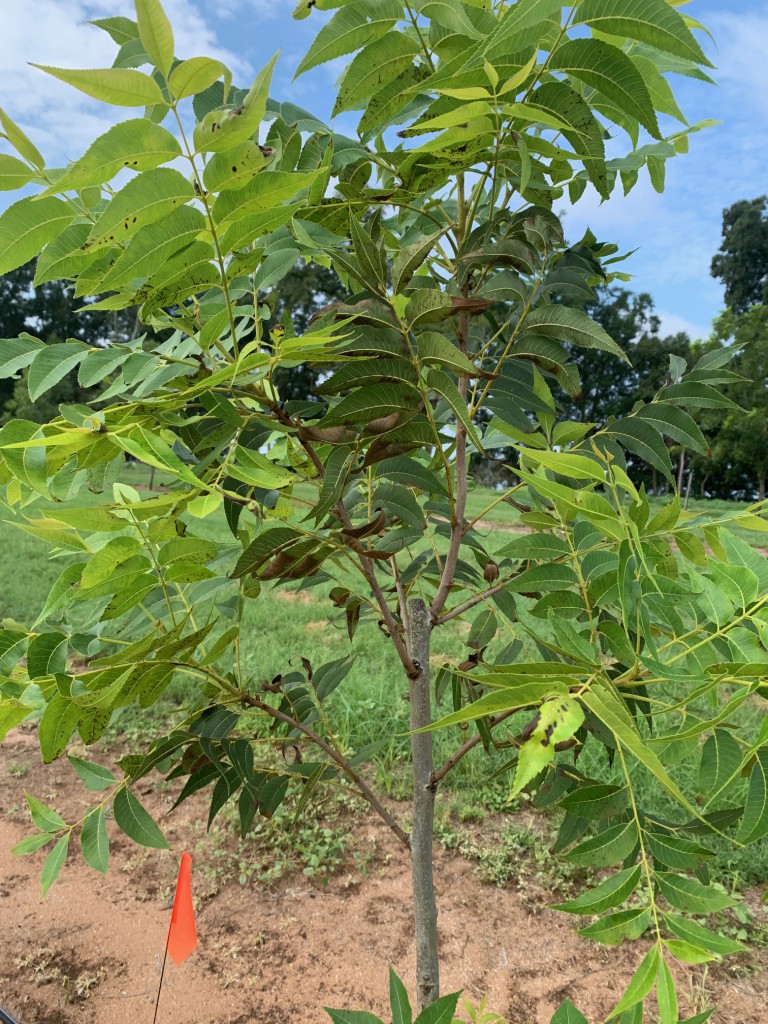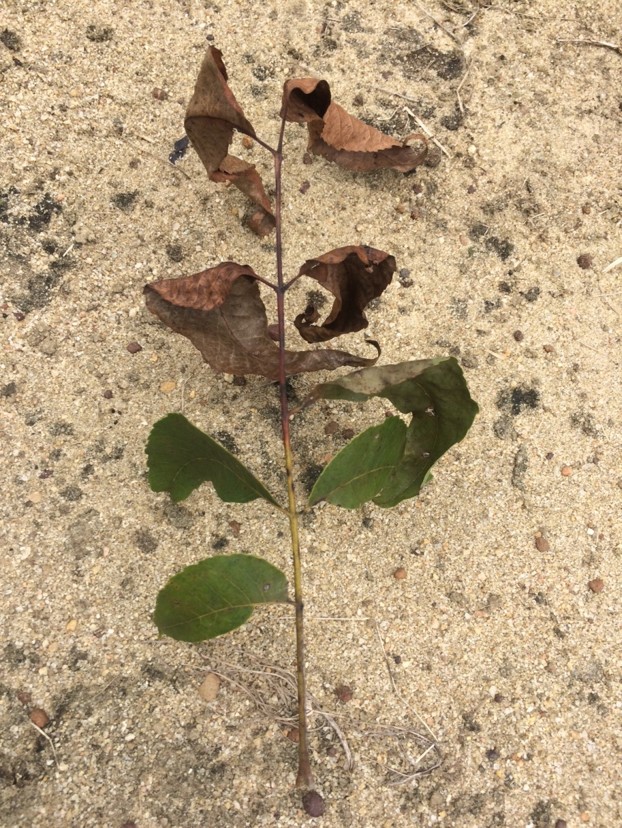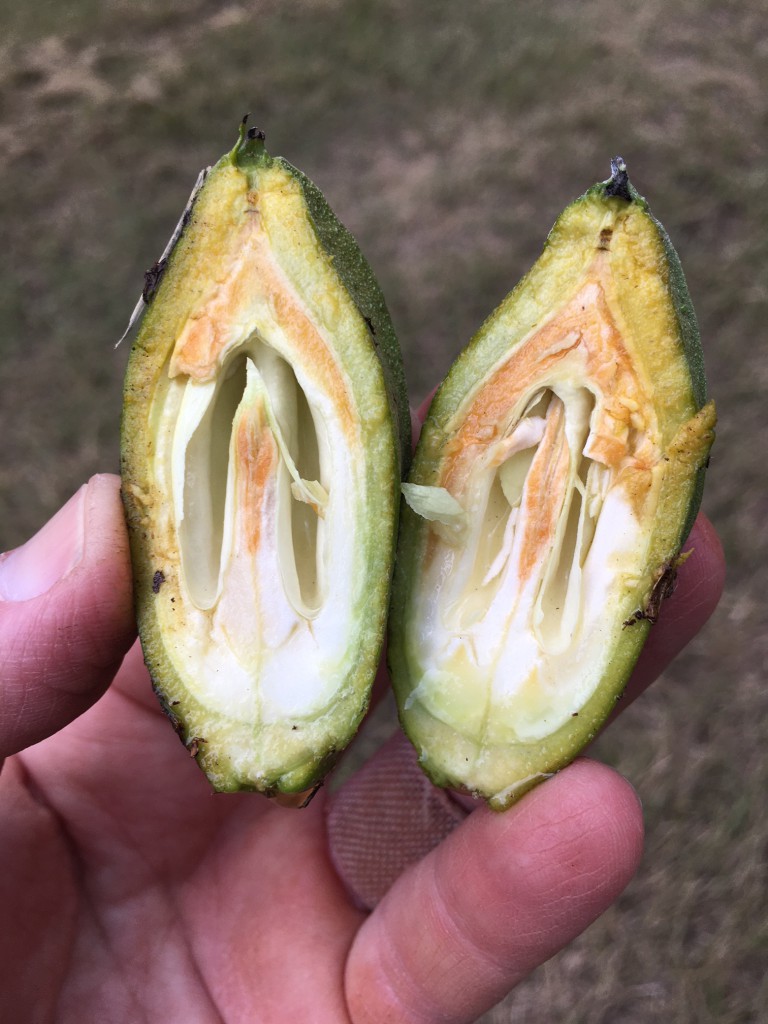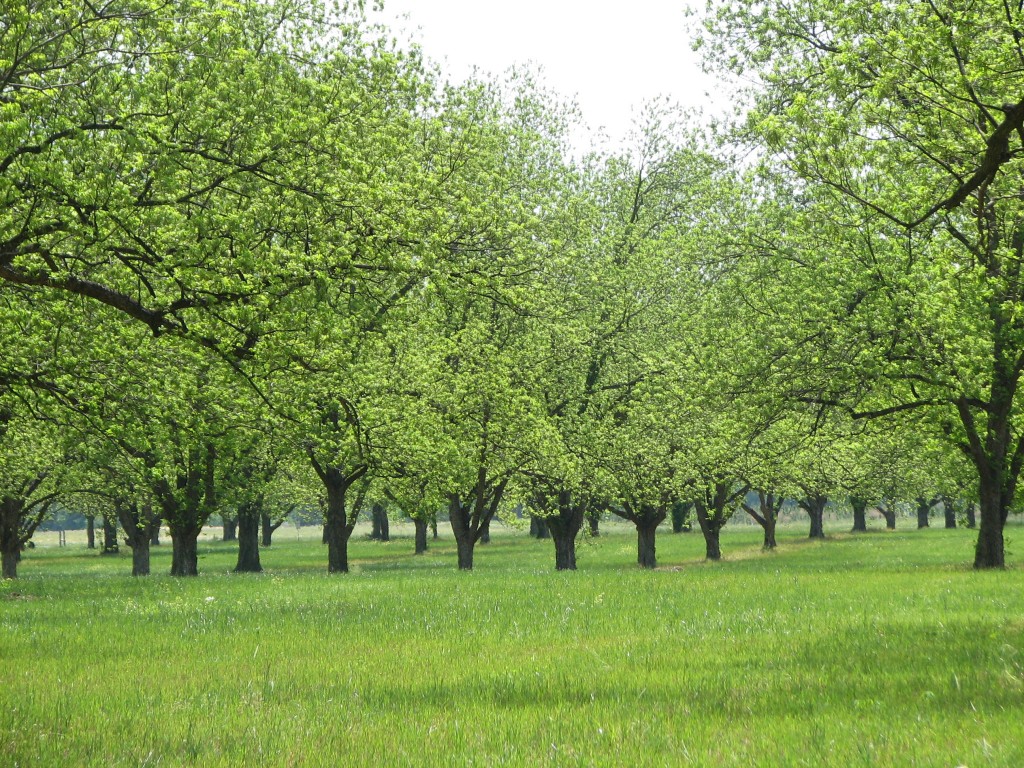We’re into late summer and seeing some leaf scorching out there. The two most common types I have had calls on this week have been from the scorching of young trees from heat stress. On older trees we are seeing a fair amount of terminal die back (Neofusicoccum).

I went back and looked at the blog and I started getting reports on young trees scorching almost exactly a year ago to the day last year. This results from the heat killing shallow feeder roots and trees usually grow out of it by the 3rd or 4th year. Symptoms usually begin toward base of the tree or base of compound leaf and move up. See here for last year’s post on this topic for further explanation of young tree leaf scorch.

Neofusicoccum is a relatively new problem we have been seeing pop up in orchards for the last 8-10 years, normally after extended periods of rainfall and cloudy weather. Neofusicoccum is a fungus causing leaf scorch symptoms that start from the tip of the compound leaf and move backward. Eventually the entire compound leaf will turn brown and has a similar appearance to fire blight. Terminal die back is a common name for it. Once you see the symptoms it is too late to do anything about it. We see this pop up periodically under the right conditions, normally later in the season like this; however, never to a level of economic damage. The Group 3 fungicides work well on this pathogen but when it is raining as often as it has been in south Georgia, it can slip in, most likely when we rotate to Elast/Tin (neither of which work as well on Neofusicoccum). See here for earlier post on Neofusicoccum.

For growers out there who have a heavy enough crop load, now is the time to think about mechanical fruit thinning. If you need to thin Pawnee, you need to get it done soon. I’d say you have about another week to get it done. For Cape Fear, Creek, Stuart, etc. you likely have another 2-3 weeks to fruit thin. Slice through the nuts in cross section to tell their maturity stage. You are looking for the “u” shaped cavity. Normally if it is 1/2 the length of the nut, the nuts are heavy enough to shake off fairly easily. Once the cavity has reached the full length of the nut it is time to stop thinning (you can continue to lighten the load and it will improve quality this year but it will be too late to help return crop). In the image below, the cavity on these Pawnee nuts has extended to about 3/4 of the full length of the nut.
